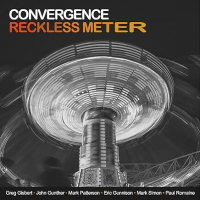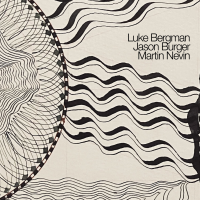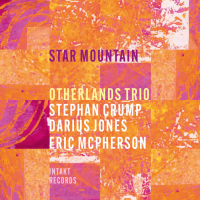Home » Jazz Articles » Reassessing » Jimmy Giuffre: The Easy Way
Jimmy Giuffre: The Easy Way

The Easy Way (Verve, 1959) did not garner rapturous reviews when it appeared in 1959. Tangents in Jazz (Capitol, 1956) really made Giuffre's reputation and established him as a presence to be reckoned with. The Easy Way generated considerably less enthusiasm, probably, because as some listeners have noticed, it pointed the way in which Giuffre as a composer and instrumentalist was headed. A change in direction that would be largely greeted with indifference, not to say, hostility, in the United States, if not in Europe. In Tangents in Jazz (Capitol,1956) Giuffre introduced the notion of a small group without a rhythm section, where the pulse was implicit in the melody, "felt" as he put it "rather than heard." "I've taken out the riding cymbal and the walking bass completely," Giuffre said. You want to call the result "chamber jazz?" Some loved it. And others, not so much. "Oh, for the love of Mike, blow," one unhappy customer complained, after being forced to think about the music for more than a moment. Giuffre had nothing against wailing, but he had already done that. He was more interested, he said in feeling, a mellow sound, long singing lines, counterpoint, dynamics, and harmonies dictated by the melodies.
These are precisely the qualities that make The Easy Way (Verve, 1959) so interesting. On the title track, the interplay between Ray Brown, Jim Hall, and Giuffre is about as compelling as you could ask, and Ray Brown manages to remind everyone that a twelve-bar blues is at the heart of jazz No fuss, but plenty of swing. "Come Rain or Come Shine" is marvelously evocative, especially in Giuffre's plangent clarinet, supported deftly by Hall. "Ray's Time" leaves one with a sense of deja vu. Could there be much doubt where George Mraz picked up his swagger in the lower register of the bass? Giuffre acquits himself well for a guy who says, "no wailing." "A Dream" is just that, nothing more than a contemplative interaction between Hall and Giuffre. "Off Center" was a clear indication of things to come shortly with Paul Bley and Steve Swallow, as is "Montage." "Time Enough" is an atonal warning: not going to be business as usual anymore.
While our review of the CD release was quite positive, time had clearly blunted the edge of the recording's innovativeness, not to say a generation of music that made The Easy Way (Verve, 1959) sound relatively tame. And it is clearly a transitional recording, or a recording by a musician whose ideas are in full transition. For those who never quite understood where free jazz was coming from in the early 1960s, The Easy Way could serve as, well, a sort of painless introduction to what was happening: traditional enough in form to be reassuring, but musical enough, for the most part, not to be terribly threatening. It is by no means a radical break as Giuffre had already made in Tangents in Jazz (Capitol, 1956), but it was as if he was trying to ease the way for the less venturesome into what he was thinking. It probably did not work then, but the recording really bears listening to over six decades later. It is never too late to learn. Still, as Ted Gioia observed in his seminal West Coast Jazz, 1945-1960 (Oxford, 1992), "Giuffre is largely unacknowledged as a pioneer." Too bad.
Track Listing
The Easy Way; Mack The Knife; Come Rain Or Come Shine; Careful; Ray's Time; A Dream; Off Center; Montage; Time Enough.
Personnel
Additional Instrumentation
Giuffre also plays tenor and baritone sax.
Album information
Title: The Easy Way | Year Released: 2003 | Record Label: Verve Music Group
Tags
PREVIOUS / NEXT
Support All About Jazz
 All About Jazz has been a pillar of jazz since 1995, championing it as an art form and, more importantly, supporting the musicians who make it. Our enduring commitment has made "AAJ" one of the most culturally important websites of its kind, read by hundreds of thousands of fans, musicians and industry figures every month.
All About Jazz has been a pillar of jazz since 1995, championing it as an art form and, more importantly, supporting the musicians who make it. Our enduring commitment has made "AAJ" one of the most culturally important websites of its kind, read by hundreds of thousands of fans, musicians and industry figures every month.
























